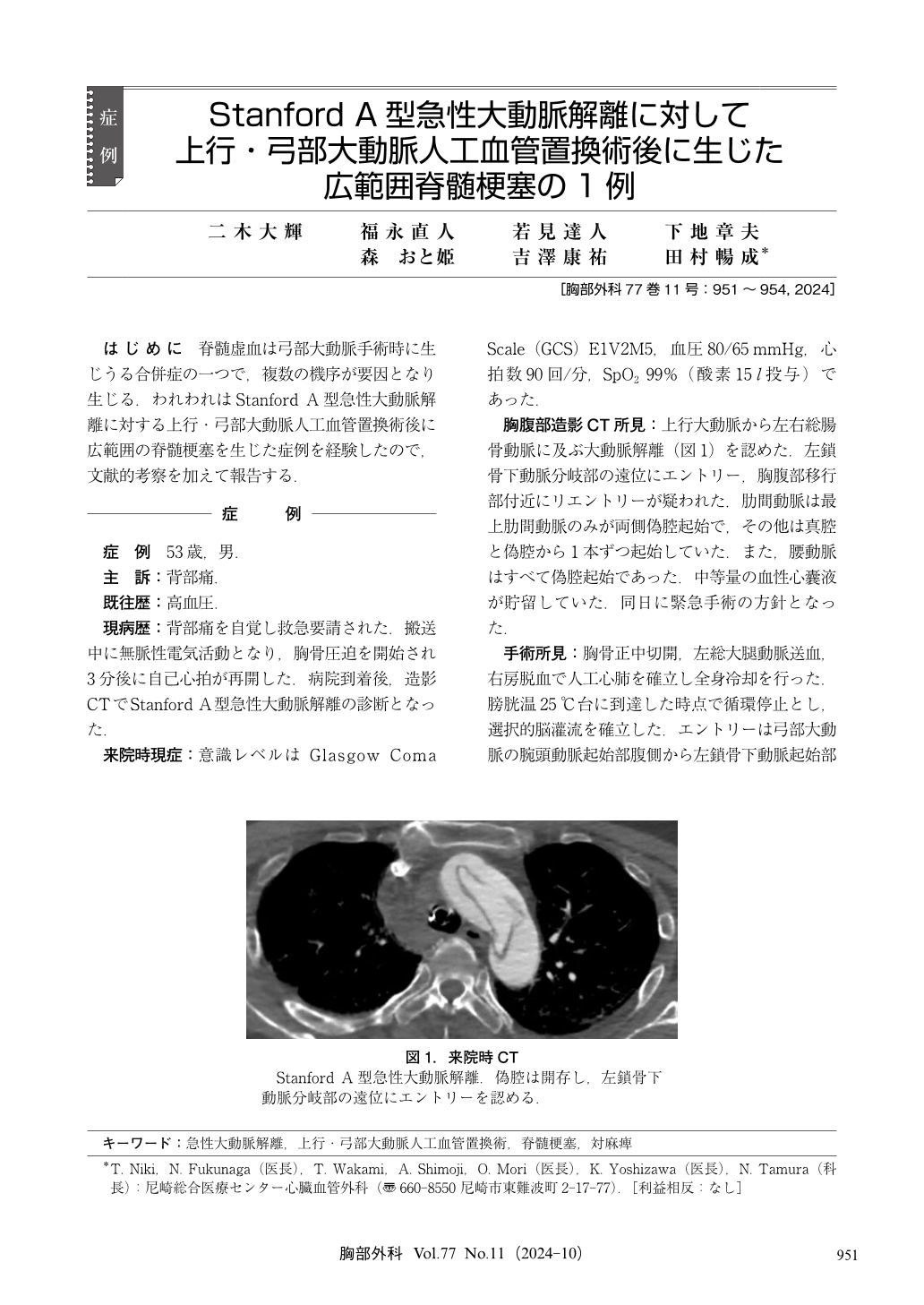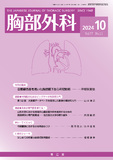Japanese
English
- 有料閲覧
- Abstract 文献概要
- 1ページ目 Look Inside
- 参考文献 Reference
はじめに 脊髄虚血は弓部大動脈手術時に生じうる合併症の一つで,複数の機序が要因となり生じる.われわれはStanford A型急性大動脈解離に対する上行・弓部大動脈人工血管置換術後に広範囲の脊髄梗塞を生じた症例を経験したので,文献的考察を加えて報告する.
A 53-year-old male, diagnosed with Stanford A acute aortic dissection, underwent a total arch replacement with a conventional elephant trunk. During the extubation phase, paraplegia and sensory disturbance were identified, prompting suspicion of spinal cord injury (SCI) attributed to thrombosis of the false lumen and subsequent obstruction of the segmental arteries. Apixaban was administered in addition to spinal drainage, meticulous blood pressure management, and administration of mannitol, edaravone, naloxone, and prednisolone. Postoperative computed tomography angiography disclosed the thrombosis of false lumen proximal to Th9 level while magnetic resonance imaging detected findings consistent with infarction in the spinal cord distal to Th3. Unfortunately, his symptoms persisted, necessitating transfer to rehabilitation facility on the 37th day postoperatively. Despite preventive measures including avoidance of too long elephant trunk, extensive false lumen thrombosis could cause SCI. While the literature reports the efficacy of anticoagulation therapy, such intervention was ineffective in our case.

© Nankodo Co., Ltd., 2024


